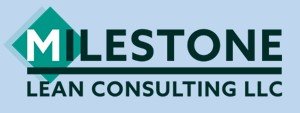Defining Lean Construction and Why it Matters
Deliver value to the customer with the least waste byflow efficiency and do it better and better.
It is a starting point for learning in our industry. It guides our path. It is our North star. We can’t measure anything without a definition. This definition captures the essential concept of Lean. Anything “Lean” will fit in this definition. It helps us differentiate what is “Lean” from what is not.
Standards are the basis for improvement. The current state of the Lean construction community is that we lack a clear definition. Lots of good ideas. But, in a churning sea of ideas, we are lacking focus and clarity. This is a problem that needs to be solved. Why is that?
Karen Martin’s book, The Outstanding Organization, lays out four conditions that create outstanding organizations: Clarity, Focus, Discipline, and Engagement. Chaos is a symptom of lacking these four attributes. She states, “The reason why history keeps repeating itself in terms of improvement methodologies and business performance is because organizations lack the building blocks to successfully apply the principles and tools required for long-term results.”
If formal organizations struggle, how much more so would a loose community struggle without focus and clarity? Let’s not repeat history. A straightforward, actionable definition increases clarity and focus. It calms the churning sea of ideas and gives them direction. It is a basis for improvement. Clarity leads to understanding which leads to adoption. It is like when we use the Last Planner® System on projects working to a common milestone. When you can see it, you can work together to achieve it.
A definition serves as our North star. How will we deliver value to our customers with the least waste? With flow efficiency. And we will do it better and better. What interim milestones do we need to set to get there? What does our staff need to learn? Do I really understand how work flows in my organization? Which methods and tools best create flow and deliver value? Far from stifling innovation, a definition becomes a catalyst for improvement.
BREAKING DOWN THE DEFINITION
The definition is universal. Lean is not industry dependent. There is no real difference between Lean Construction and Lean anything except for the environment. The principles never change. Methods and tools are developed or adapted for each industry. One example in construction is the Last Planner System. Nobody in Lean Manufacturing ever uses it and few have heard of it. But in construction, it is a key method to create flow.
Deliver is how. It is the method of transforming inputs to outputs. In Lean, the how is based on flow efficiency.
Value. Delivering value is why our projects exist. It is defined by the customer. The value stream is understood in relation to flow and value.
Customer. The reason for the work is to transform something to meet a customer request. It is impossible to define value without the customer. Success is based on satisfying the customer demand.
Waste in all forms, including overburden and variation. We want to eliminate it. Waste is understood in relation to value. It is the opposite of value. We pursue perfection, but we recognize that there is always more waste to eliminate. So, we add the word least.
Flow Efficiency. It is the core idea of Lean. Instead of optimizing individual resources or steps, we optimize the whole. We look at flow from the point of view of the work. We recognize that when we paddle together the canoe moves faster. And when the canoe moves faster, we all benefit.
The book This is Lean by Nikas Modig and Pär Åhlström, first published in 2015, explained the fundamental mechanism of Lean: Flow efficiency. Read the forward by Greg Howell in the Lean Construction Institute special edition. He relates both some history of Lean construction and his observations on the book. He notes that the construction industry was very much “resource efficiency” focused. Greg went on to state, “For myself, and I hope you, understanding how we started and developed our understanding of the difference between Flow and Resource productivity, helps me both put our current situation in focus and gives us a path to follow moving forward.” He continues, “Had This is Lean been available in those early years, we might better have managed the development of Lean Construction.”
Better and better. Continuously improve the what and the how, the product and flow of value.
Why not include respect for people in the definition? Because respect for people transcends Lean. It is how people should treat each other even if they are otherwise totally unfamiliar with Lean. For example, if people in a family respect each other does that mean they are Lean? Not really. In contrast, if people in an organization do not respect each other, it will be difficult to collaborate, and that makes flow and optimizing the whole near impossible in our industry. So, yes, it is a particularly important principle, but it is not Lean in itself.
CONCLUSION
The purpose of a definition is to bring clarity and focus. This is a basis for better learning and action that drives Lean thinking in the construction industry and our projects. Do you agree with the definition? Use it. Share it. Don’t agree? Not sure? Let’s have a discussion. This is not simply a theoretical academic discussion. A clear definition of Lean Construction is fundamental to a Lean transformation. With a standard industry definition, we will bring clarity, which increases understanding, which increases adoption. Use it.
